Blog Archives
Malibu Longboards Surfing Live Stream Surfboard Rentals Surf Lessons
The Surfboard Warehouse Vintage Log 2014
The Cinnamon Girl By Mitch Surman Longboard Surfboard Review
Vintage Wood Wooden Longboard Skateboard Metal Wheels Sidewalk Surfboard 35















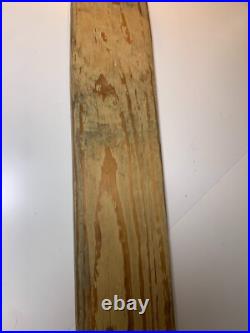





One of the very first longboards! A piece of history! Of the era whereby skateboarding was marketed as a means to learn how to surf “sidewalk surfboard”. 35″ L x 5.75″W. Has a cool logo of a guy on surfboard. It’s in fair-good condition: it has just enough wear to give it street cred, but is still legible. History of early wooden longboards with metal wheels, often known as “sidewalk surfboards” in the late 1950s and early 1960s. The Origins of Skateboarding: The “Sidewalk Surfboard” Era (1950s-early 1960s). ???? Roots in Surf Culture. Skateboarding began in California in the 1950s, invented by surfers looking for a way to “surf” when the ocean was flat. The earliest boards were homemade, using wooden planks and attaching metal roller skate wheels to the bottom. These makeshift boards were nicknamed “sidewalk surfboards” to emphasize the connection to surfing. Decks : Flat, solid wood-usually rectangular or slightly rounded, sometimes shaped like small surfboards. Wheels : Steel or cast metal wheels taken from roller skates. These offered little to no grip, a very rough ride, and could easily lock up on small debris. Trucks : Often scavenged or rudimentary, lacking the responsiveness of modern skate hardware. Early skateboarding gained national attention when Life Magazine published photos of sidewalk surfing in the early 1960s. Local competitions and skate demonstrations boosted visibility. Safety issues due to steel wheels and lack of control led to numerous accidents. By 1965, the first skateboarding craze had started to fade, partly because of injuries and negative press. In 1963-64, clay composite wheels started replacing steel. In 1973, urethane wheels were introduced by Frank Nasworthy (Cadillac Wheels), completely transforming the sport.
Vintage 60s Sidewalk Surfboard By Champion
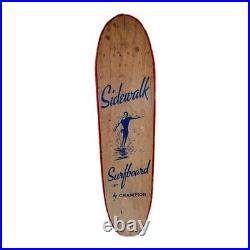
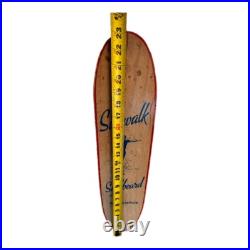

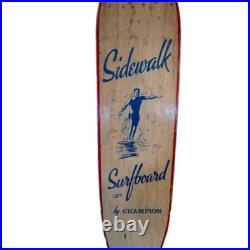
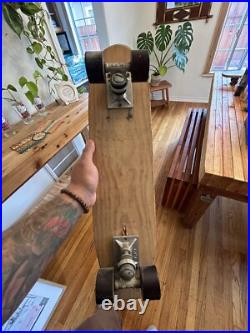
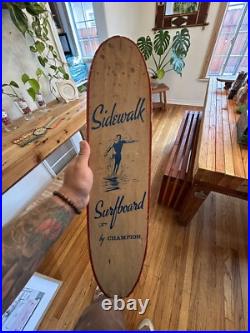
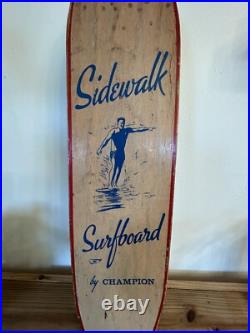
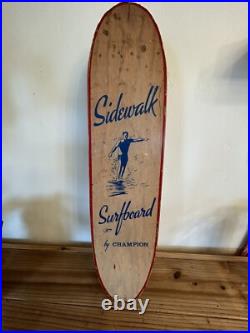
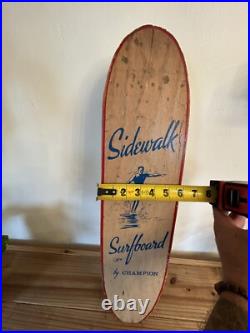
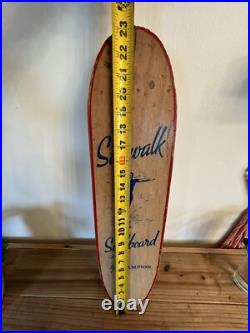
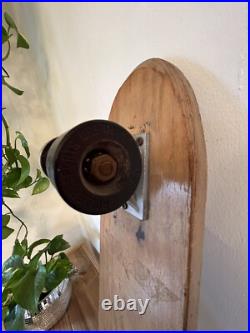
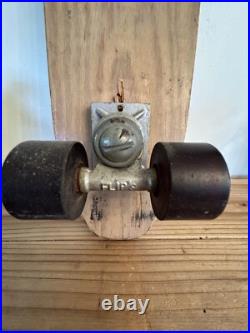

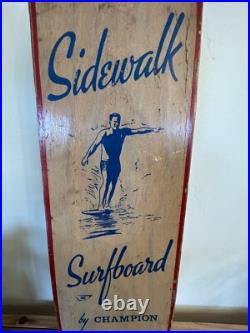
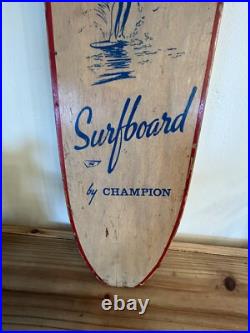
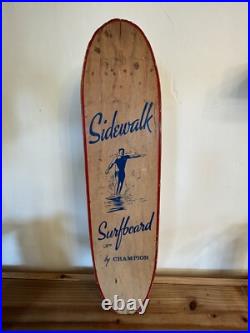
Vintage 60s side walk surfboard. Awesome board to add to the collection. See photos for details on condition of board. Full complete with trucks, wheels, bearings, deck. Awesome board by Champion. Any questions feel free to reach out.
Vtg. Rare Titan Rocket Sidewalk Surfboard Wooden Skateboard Blue Metal Wheels
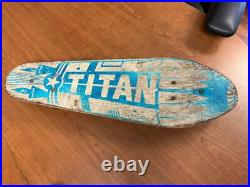
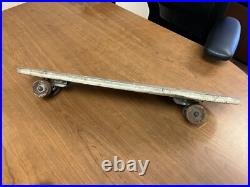
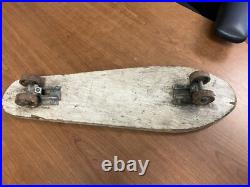
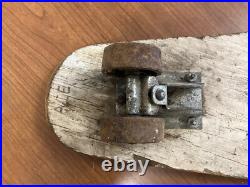
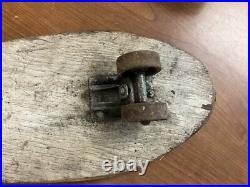
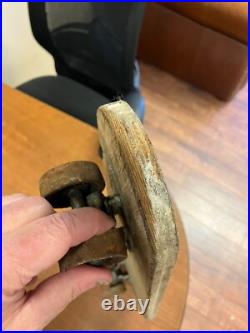
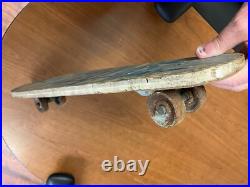
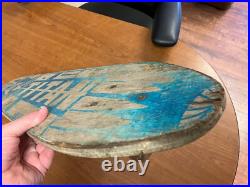
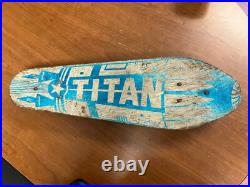
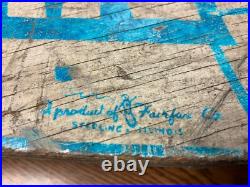

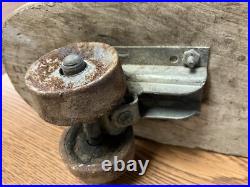
Rare Titan Rocket Sidewalk Surfboard Wooden Skateboard Blue Metal Wheels. Wheels roll just fine.
Vintage Wooden Sidewalk Surfboard Skateboard Fifteen Toes Nash Wood Metal Wheels
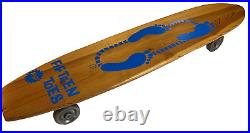
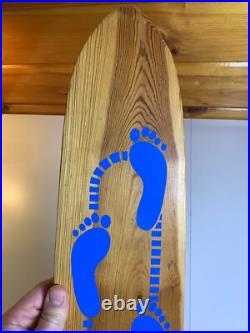
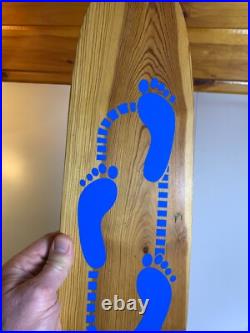
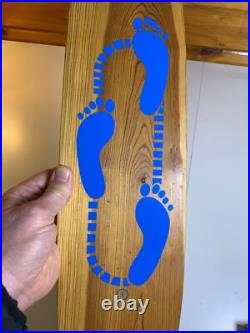
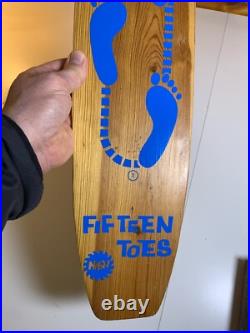
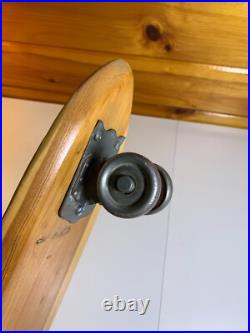
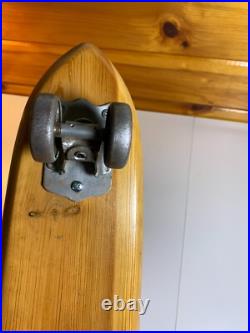
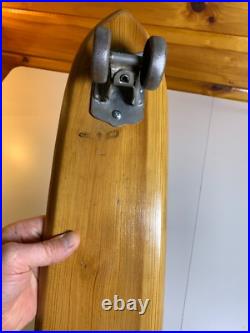
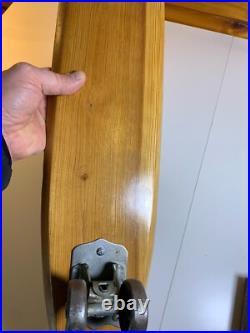
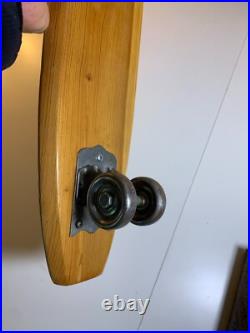
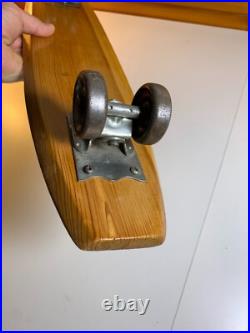
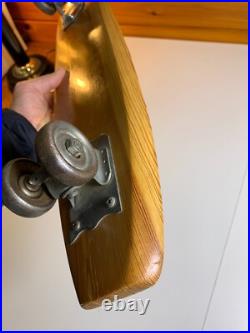
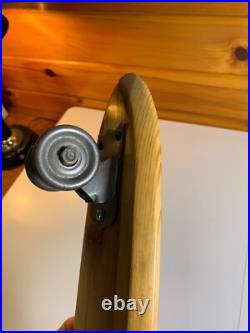
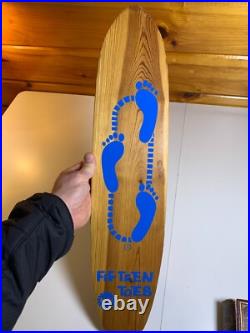
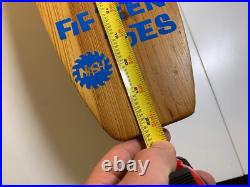
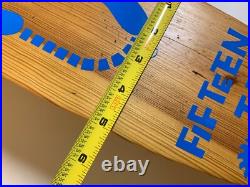
A piece of Americana! This hails from the 60s when skateboarding was being marketed as an easy way to learn how to surf “Sidewalk Surfing”! This has been professionally re-finished in the last couple of years; new lacquer and new vinyl decals.
NASH 17 ROCK RIDER SURFBOARD 22 Wood Skateboard 60s Vintage rare
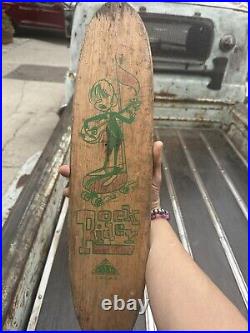
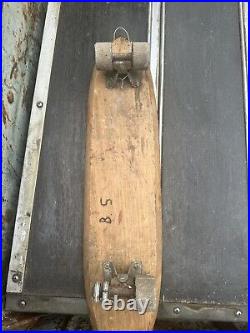
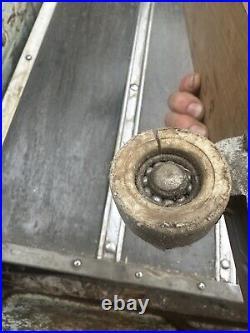
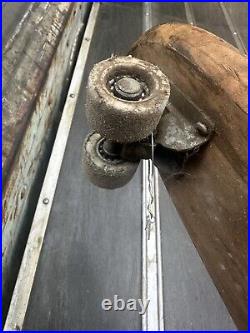
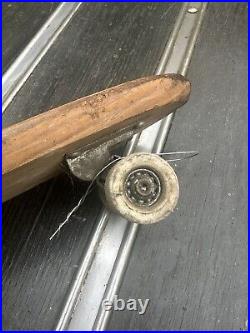
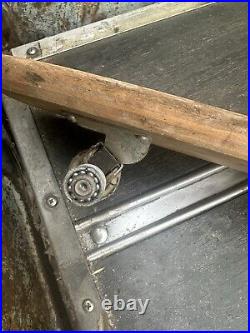
The image shows a vintage Rock Rider Nash Sidewalk Skateboard, likely from the 1960s. Origin: Fort Worth, Texas Era: 1960s Type: Sidewalk surfboard Features: Wooden deck Green graphic of a character playing an instrument while riding the skateboard “Rock Rider” logo “TEXAS” printed near the tail Collectibility: Considered a rare and standout piece for collectors of vintage skateboards Construction: Early versions had plastic wheels and metal ball bearings, later models (around 1970) featured urethane wheels for a smoother ride. Legacy: Nash was one of the first companies to mass-produce skateboards, contributing to the popularization of the sport.
Vintage Skateboard Duro 999 1960s Sidewalk Surfboard Metal Wheels 19














This vintage skateboard by Duro is a true gem from the 1960s. With its sleek design and metal wheels, it’s perfect for cruising on the sidewalk or adding a retro touch to your collection. The board measures 19 inches in length and is in great shape for its age. The Duro 999 model is a classic example of 60s skateboarding culture, made in the United States with quality craftsmanship. Whether you’re a collector or a skater, this sidewalk surfboard is sure to impress.